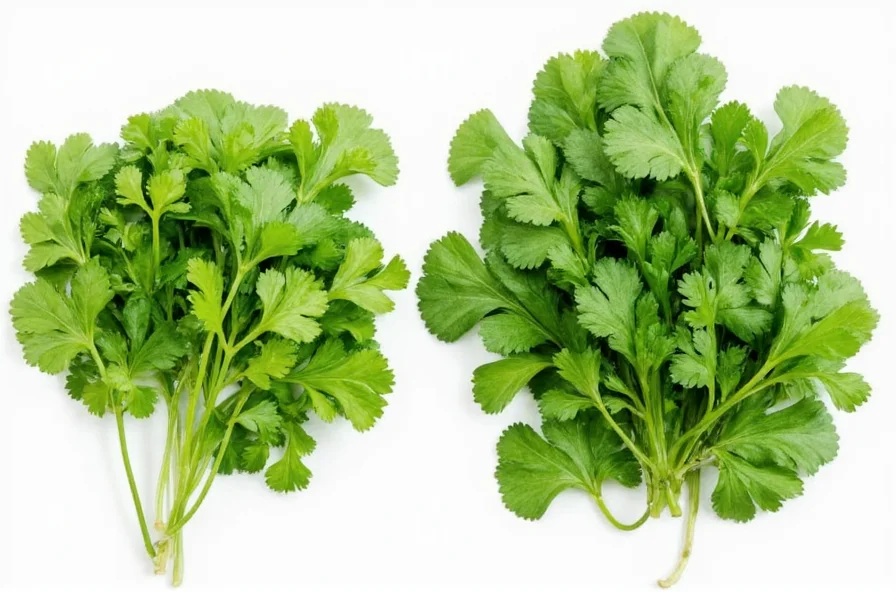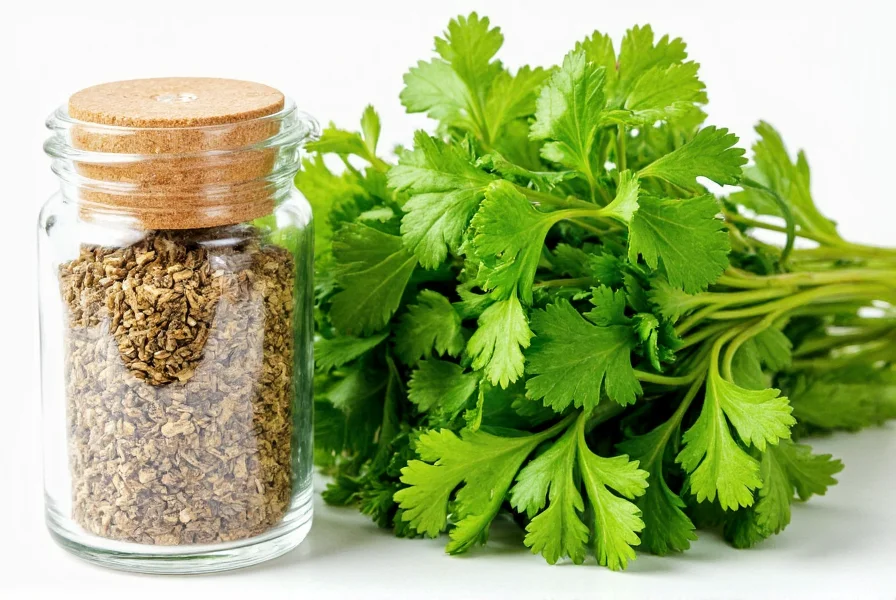Running out of fresh coriander leaves while cooking doesn't have to ruin your meal. Understanding the right alternative depends on recognizing coriander's unique citrusy, slightly peppery flavor profile and how it functions in different cuisines. This comprehensive guide provides practical solutions backed by culinary expertise, helping you maintain dish integrity when fresh coriander isn't available.
Understanding Coriander's Flavor Profile
Coriander leaves, known as cilantro in the Americas, deliver a distinctive bright, citrusy flavor with subtle peppery notes. This herb plays different roles across global cuisines - essential in Mexican salsas, finishing touch in Indian chutneys, and integral component in Southeast Asian soups. When seeking fresh coriander leaf alternatives for cooking, consider both the flavor contribution and textural role in your specific dish.
Top 5 Coriander Leaf Substitutes Ranked
Not all substitutes work equally well in every application. Here's how common alternatives compare for different culinary scenarios:
| Substitute | Best For | Substitution Ratio | Flavor Match | Limitations |
|---|---|---|---|---|
| Parsley (flat-leaf) | Mild dishes, garnishes, European recipes | 1:1 volume | 60% | Lacks citrus notes, milder flavor |
| Culantro (recao) | Caribbean, Latin American dishes | 1:2 volume (use half) | 85% | Stronger flavor, not widely available |
| Basil + Mint combo | Thai, Vietnamese, Indian recipes | ½ basil + ½ mint to 1 coriander | 75% | Changes flavor profile slightly |
| Dried coriander leaves | Cooked dishes, stews, curries | 1 tsp dried = 2 tbsp fresh | 50% | No fresh finish, earthier flavor |
| Arugula (rocket) | Mexican dishes, salsas | 1:1 volume | 70% | Peppery note differs from coriander |
Detailed Substitute Analysis
Culantro: The Closest Flavor Match
Culantro (Eryngium foetidum), often called Mexican coriander or recao, provides the most similar flavor profile to fresh coriander leaves. This long-leafed herb shares coriander's distinctive citrus notes but with greater intensity. When using culantro as a coriander leaf replacement for Mexican dishes, use approximately half the amount since its flavor is stronger. Culantro holds up better during cooking, making it ideal for soups and stews where fresh coriander would wilt.

Parsley: The Most Accessible Alternative
Flat-leaf (Italian) parsley serves as the most widely available substitute for coriander leaves. While it lacks the citrus notes, it provides similar texture and visual appeal. This works particularly well as a cilantro substitute in Indian recipes where coriander plays a supporting rather than starring role. For best results when out of fresh coriander, use parsley in dishes with strong competing flavors like curries or roasted vegetables.
Basil and Mint Combination
For Southeast Asian cuisine, a 50/50 blend of Thai basil and mint creates the closest approximation to coriander's complex flavor. This combination works especially well as a coriander leaf replacement for Thai food where the distinctive anise notes of Thai basil complement the mint's freshness. Use this blend in equal volume to replace coriander in salads, spring rolls, and noodle dishes.
Regional Substitution Strategies
The ideal coriander substitute varies significantly by cuisine:
- Mexican cooking: Use flat-leaf parsley with a squeeze of lime juice to approximate cilantro's brightness in salsas and guacamole
- Indian cuisine: Try a mix of mint and dill for chutneys, or use dried coriander leaves in cooked dishes
- Thai/Vietnamese: Combine Thai basil and mint in equal parts for salads and noodle dishes
- Middle Eastern: Use a combination of parsley and a touch of cumin for tabbouleh and salads
When Substitution Isn't Recommended
Some dishes rely so heavily on coriander's unique flavor that substitutes significantly alter the intended taste. These include:
- Traditional chimichurri sauce
- Certain Indian chutneys where coriander is the primary herb
- Vietnamese pho garnish tray
- Authentic salsa verde
For these applications, consider making a special trip for fresh coriander or adjusting your menu rather than using a substitute that will compromise the dish's authenticity.
Maximizing Fresh Coriander Shelf Life
Preventing the need for coriander leaf replacement starts with proper storage. Treat fresh coriander like cut flowers: trim the stems, place in a glass with an inch of water, cover loosely with a plastic bag, and refrigerate. Change the water every two days. This method typically extends freshness to 2-3 weeks. For longer storage, chop the leaves, mix with a little oil, and freeze in ice cube trays - these frozen coriander portions work well as a substitute for fresh in cooked dishes.
Understanding Dried Coriander Leaf Substitution
Dried coriander leaves (not to be confused with coriander seeds) offer a viable option for cooked dishes but shouldn't be used as a fresh garnish. The drying process transforms the flavor profile, creating earthier, less citrusy notes. When using dried coriander as a substitute in Indian recipes or stews, remember the substitution ratio: 1 teaspoon dried equals approximately 2 tablespoons fresh. Add dried coriander early in the cooking process to allow flavors to develop fully.

FAQ: Coriander Leaf Substitutes
Can I use coriander seeds instead of fresh coriander leaves?
No, coriander seeds have a completely different flavor profile - warm, nutty, and citrusy in a different way. They cannot substitute for fresh leaves. Use seeds as a spice and leaves as a fresh herb; they serve different culinary purposes.
What's the best substitute for coriander in salsa?
For Mexican salsas, flat-leaf parsley combined with a squeeze of fresh lime juice provides the closest approximation. Arugula also works well in tomato-based salsas, offering a similar peppery note. Avoid strong substitutes like culantro which can overwhelm the delicate salsa balance.
How do I substitute coriander in Indian recipes?
In Indian cooking, try a combination of mint and dill for chutneys and raitas. For cooked dishes like curries, dried coriander leaves work better than fresh herb substitutes. Remember that coriander often plays a supporting role in complex Indian spice blends, so the absence may be less noticeable than in simpler dishes.
Does cilantro taste like soap to everyone?
Approximately 20-30% of people have a genetic variation that makes cilantro taste soapy. If you're among them, parsley makes an excellent neutral substitute. For those who don't perceive the soapy taste, culantro provides the closest flavor match when fresh coriander isn't available.
Can I grow coriander indoors to avoid substitution needs?
Yes, coriander grows well in containers with proper care. Use a deep pot (at least 12 inches), well-draining soil, and place in a sunny windowsill. Harvest outer leaves regularly to encourage growth. Indoor plants typically yield fresh coriander for 2-3 months before needing replacement, reducing your need for coriander leaf alternatives for cooking.










 浙公网安备
33010002000092号
浙公网安备
33010002000092号 浙B2-20120091-4
浙B2-20120091-4